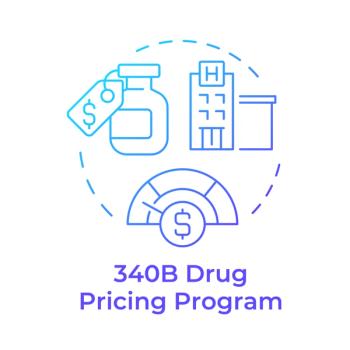
Depend on Biomarkers, Not Symptoms, for Diagnosis, Early Treatment of GVHD, Experts Argue
John Levine, M.D., a graft-versus-host-disease expert at the Icahn School of Medicine at Mount Sinai in New York, makes a case for biomarkers in a review article published in the American Journal of Hematology.
Despite advances in transplant medicine, acute graft-versus-host disease (GVHD) remains a major threat to patient outcomes. A new review, published in the
Acute GVHD occurs when donor stem cells (the graft) attack the recipient’s healthy tissues (the host). It affects an estimated
Although preventive treatments, such as regimens incorporating
MAGICAL thinking
To address this, researchers have developed biomarker-based tools to support earlier and more accurate risk stratification. A new review paper, authored by
The MAGIC algorithm uses serum levels of two biomarkers — tumorigenesis 2 (ST2) and regenerating islet-derived 3 α (REG3α)— to quantify GI tissue damage and provide more accurate prognostic information than clinical evaluation alone.
“The MAGIC biomarker algorithm facilitates testing personalized medicine approaches for patients with acute graft-vs-host disease,” Levine told MHE in an email. “Patients with high biomarker scores may benefit from more intensive treatments, while patients with low biomarker scores are good candidates for testing less toxic treatments.”
Recent clinical studies have demonstrated the predictive value of the MAGIC algorithm for outcomes such as treatment response, GVHD flare and non-relapse mortality. Composite scoring systems offer enhanced accuracy, helping to identify both low-risk patients who may avoid corticosteroids and high-risk patients in need of escalated therapy.
Levine and his colleagues cite a 2024 study involving 715 patients with newly diagnosed GVHD that showed that all combinations of REG3α, ST2 and a third biomarker, amphiregulin (AREG), successfully stratified patients by risk for nonrelapse mortality. Another study they cite used AREG alone. They note that ST2 and AREG are strongly associated because they are generated in the same signaling pathway.
Levine’s review also introduces the Manhattan risk score, a clinical risk stratification system developed using data from over 1,800 patients treated for acute GVHD. This model expands upon earlier tools by incorporating less common GVHD presentations and creating distinct risk groups with differing non-relapse mortality rates. When combined with biomarker data in the MAGIC composite score, the Manhattan system enhances the ability to guide treatment decisions.
To support clinical decision-making, an online calculator is available at
Levine and his colleagues argue in the final paragraph of their review that clinical trials that use MAGIC composite scores — or something similar — should be more efficient than those relying solely on clinical criteria. “By excluding patients less likely to benefit, these trials will help advance the goal of ensuring that the right patient receives the right treatment at the right time in GVHD management,” they wrote.
Newsletter
Get the latest industry news, event updates, and more from Managed healthcare Executive.


















































